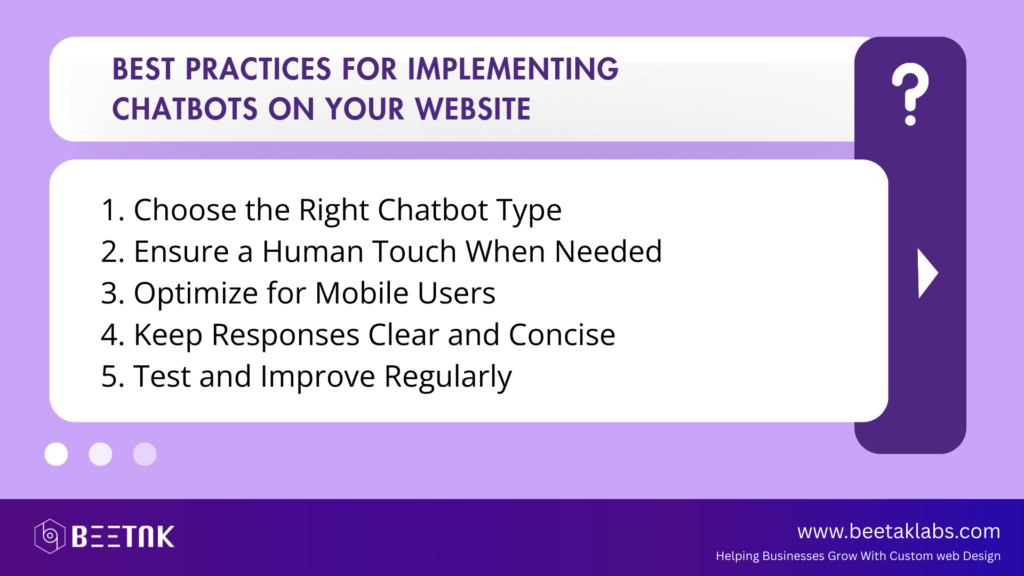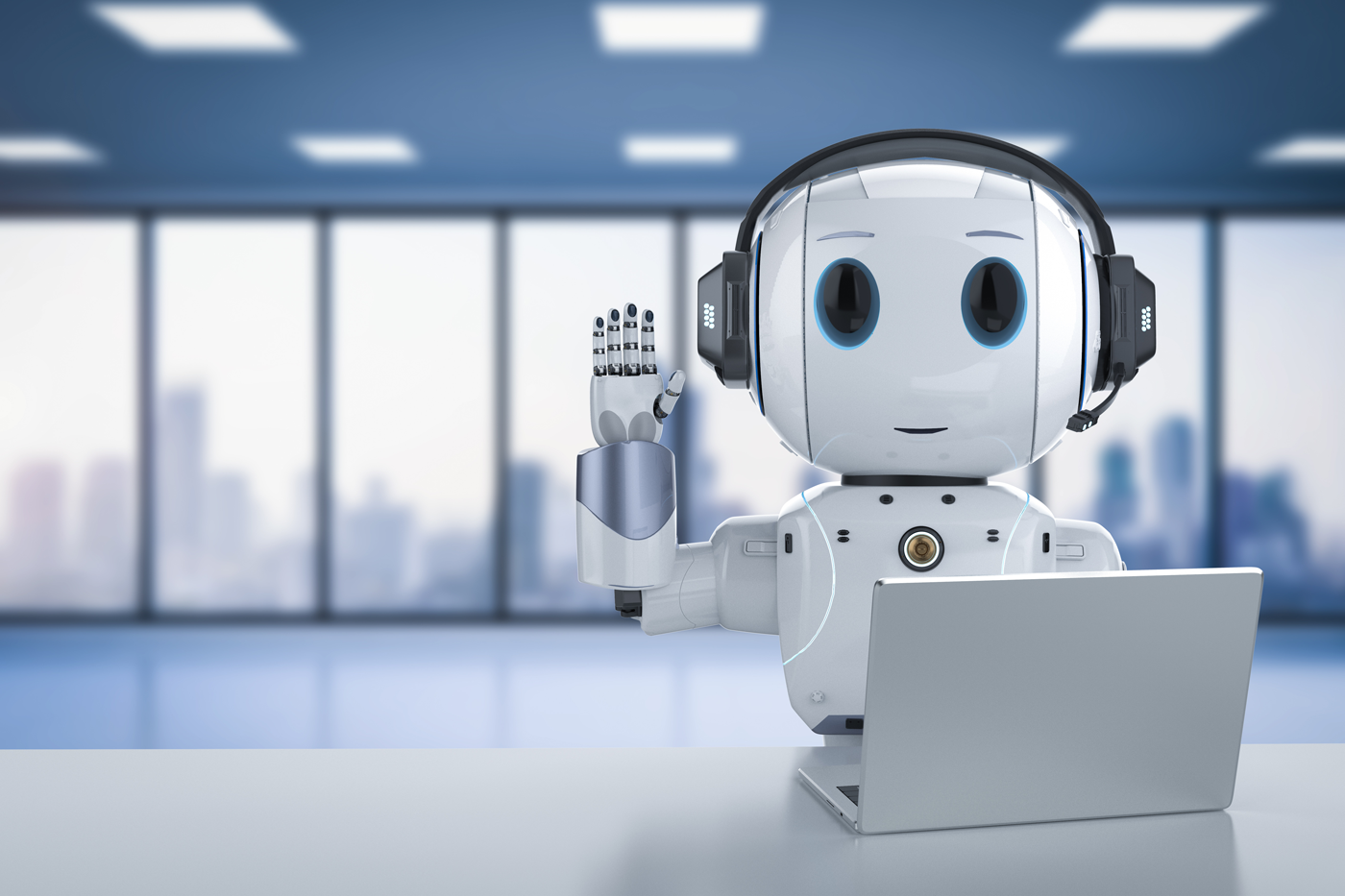Introduction
In today’s fast-paced digital world, customers expect instant responses and personalized interactions when visiting a website. Businesses that fail to meet these expectations risk losing potential leads and customer satisfaction. This is where AI-powered chatbots come in, transforming the way businesses engage with users online.
Chatbots enhance customer experience (CX) by providing 24/7 support, instant replies, and personalized recommendations—all while reducing the workload on human support teams. This guide explores how chatbots can improve customer experience, best practices for implementation, and how to ensure they add real value to your website.
The Role of Chatbots in Customer Experience
A chatbot is an AI-driven tool that simulates human conversations to assist users in real time. Whether answering FAQs, handling bookings, or guiding customers through the buying process, chatbots significantly enhance CX.
According to Salesforce, 69% of consumers prefer using chatbots for quick communication. The benefits of chatbots in improving customer experience include:
- Instant Response Times – Customers no longer have to wait for support agents.
- 24/7 Availability – Chatbots provide uninterrupted service.
- Personalization – AI-driven chatbots offer tailored recommendations.
- Reduced Workload – Human agents can focus on complex queries.
- Multilingual Support – Expanding your reach globally.
How to Use Chatbots for a Better Website Experience

1. Providing Instant Customer Support
Customers expect quick resolutions to their problems. Chatbots can handle frequently asked questions (FAQs), order tracking, and basic troubleshooting in seconds. By integrating chatbots into your website’s support system, users can resolve issues without waiting for a human agent.
Example: E-commerce websites use chatbots to help customers check order statuses instantly, reducing frustration and support inquiries.
2. Offering Personalized User Experiences
AI-powered chatbots analyze customer preferences, past behavior, and browsing history to deliver personalized recommendations. This feature is crucial for e-commerce websites, SaaS platforms, and service providers.
Example: An AI chatbot on a fashion website suggests outfits based on a customer’s past purchases, improving engagement and sales.
3. Assisting in Lead Generation and Sales
Chatbots help qualify leads, collect customer information, and guide users through the sales funnel. They engage visitors in real-time, capturing potential leads before they leave the site.
Example: A chatbot can ask visitors about their budget and needs before connecting them to a sales representative, improving conversion rates.
4. Reducing Cart Abandonment Rates
One of the biggest challenges for e-commerce businesses is cart abandonment. Chatbots help reduce this issue by reminding users about their abandoned carts and offering incentives like discounts or free shipping.
Example: If a user leaves items in their cart, a chatbot can send a reminder message like, “Don’t forget your items! Enjoy 10% off if you complete your purchase today.”
5. Streamlining Booking and Appointment Scheduling
For businesses offering services, chatbots make scheduling fast and hassle-free by integrating with calendars and booking systems. Users can book appointments directly through the chatbot without navigating multiple pages.
Example: A chatbot on a healthcare website allows patients to schedule doctor appointments instantly.
6. Offering Multilingual Support for Global Audiences
Businesses with international customers can integrate multilingual chatbots to break language barriers and provide better customer experiences.
Example: A travel website chatbot can assist users in multiple languages, helping them find flights, hotels, and tour packages effortlessly.
7. Gathering Customer Feedback and Insights
Chatbots can collect real-time feedback by asking users about their experience after a support interaction or purchase. This data helps businesses improve their services based on customer insights.
Example: A chatbot may ask, “How satisfied are you with our service today?” and offer multiple response options to gather insights.
Best Practices for Implementing Chatbots on Your Website
To maximize chatbot effectiveness, follow these best practices:

1. Choose the Right Chatbot Type
There are different types of chatbots, including:
- Rule-Based Chatbots – Work with predefined scripts and responses.
- AI-Powered Chatbots – Use machine learning to improve interactions.
- Hybrid Chatbots – Combine both rule-based and AI-driven capabilities.
For complex businesses, AI-powered chatbots offer the best customer experience and adaptability.
2. Ensure a Human Touch When Needed
While chatbots handle routine queries, always provide an option to connect with a human agent when necessary. Customers appreciate human support for complex or emotional concerns.
3. Optimize for Mobile Users
With over 60% of web traffic coming from mobile devices, ensure that your chatbot is mobile-friendly and works seamlessly across all screen sizes.
4. Keep Responses Clear and Concise
Chatbot messages should be short, direct, and engaging. Long or robotic responses can frustrate users.
5. Test and Improve Regularly
Monitor chatbot performance using customer feedback and analytics to make improvements over time. A/B testing different chatbot scripts can help refine interactions for better user satisfaction.
The Future of Chatbots in Customer Experience
As AI technology evolves, chatbots will become even more intelligent and human-like. Future trends in chatbot development include:
- Advanced Personalization – Hyper-customized experiences based on AI-driven behavioral insights.
- Voice-Activated Chatbots – Integrated with smart assistants like Alexa and Siri.
- Emotionally Intelligent AI – Recognizing customer sentiments for better responses.
Final Thoughts
Chatbots are powerful tools for improving customer experience on your website. From providing instant support and personalizing interactions to boosting sales and reducing cart abandonment, AI-powered chatbots help businesses create seamless customer journeys.
By implementing smart chatbot strategies, you can enhance engagement, improve response times, and drive higher conversions. The future of customer experience lies in automation, personalization, and AI-driven conversations—and chatbots are leading the way.
Want to learn more about optimizing your website? Check out our guide on 10 Powerful Features for a High-Performing Business Website



